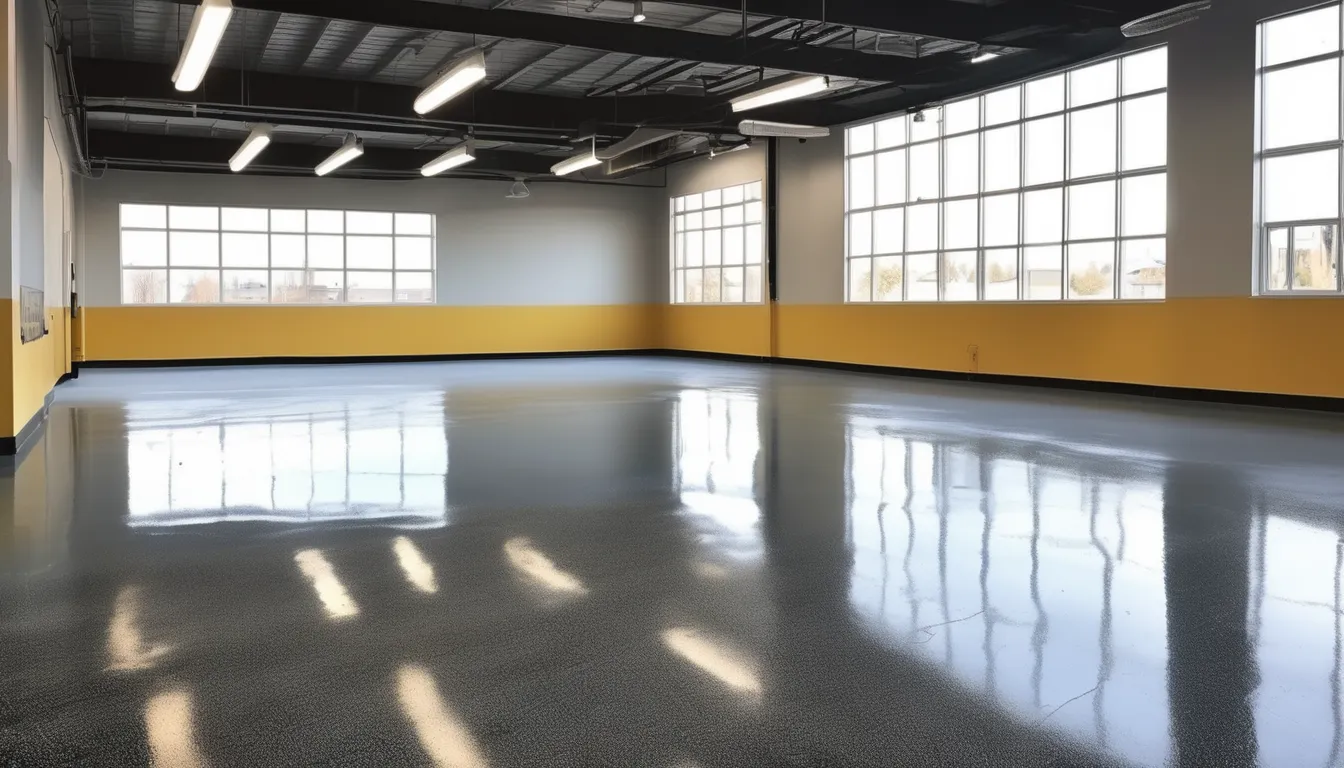Choosing the Right Commercial Floor Coating for Your Business
When you’re selecting a commercial floor coating for your business, it’s important to assess your specific needs first. Different environments and activities demand different solutions, whether it’s durability for high traffic or slip resistance for safety. You might find yourself weighing the benefits of epoxy versus polyurethane while considering costs and long-term maintenance. However, the choices can feel overwhelming, and making the wrong decision could impact your operations. What factors should you prioritize to ensure you’ve got the best fit for your space?
Assessing Your Business Needs
When it comes to selecting the right commercial floor coating, understanding your business needs is crucial. You need to assess factors like the type of traffic your floors will experience. For instance, will your space be subject to heavy machinery or high foot traffic? Identifying this helps you choose a coating that can withstand wear and tear.
Next, consider the environment. Will your floors be exposed to chemicals, moisture, or extreme temperatures? Each of these elements can impact the longevity and performance of the coating.
Also, think about the aesthetic aspect; does the coating need to match a specific brand image or enhance the overall look of your space?
Don’t forget to evaluate your budget. High-quality coatings may come with a higher initial cost, but they could save you money in the long run due to reduced maintenance and replacement needs.
Lastly, consider installation time and disruptions to your operations. You want a solution that minimizes downtime while meeting all your functional and aesthetic requirements.
Types of Commercial Floor Coatings
There are several types of commercial floor coatings available, each designed to meet specific needs and conditions. One popular option is epoxy flooring, known for its durability and resistance to chemicals, making it ideal garage floor coatings warehouses and manufacturing facilities.
If you’re looking for something more slip-resistant, consider polyurethane coatings, which provide excellent traction and are great for areas prone to moisture.
For a quick and cost-effective solution, you might explore acrylic coatings. They’re easy to apply and dry quickly, making them suitable for retail spaces where downtime needs to be minimized.
If you need a heavy-duty option, think about polyaspartic coatings. These offer rapid curing times and superior UV resistance, making them perfect for outdoor applications.
Another option is cementitious urethane, which excels in environments that experience extreme temperature fluctuations.
Lastly, for a more aesthetic appeal, decorative floor coatings can enhance your space while providing protection.
Each type has unique advantages, so it’s essential to assess your specific environment and use case before making a choice. Selecting the right coating can significantly impact your floor’s performance and longevity.
Key Features to Consider
Choosing the right commercial floor coating involves considering several key features that directly impact performance and suitability.
You want to ensure the coating you select meets your business’s specific needs. Here are four important features to keep in mind:
- Durability: Look for coatings that can withstand heavy foot traffic, machinery, and potential spills. A durable coating minimizes wear and tear, saving you money in the long run.
- Slip Resistance: Safety is crucial in any commercial space. Opt for coatings that offer adequate slip resistance to reduce the risk of accidents, especially in high-moisture areas.
- Chemical Resistance: Depending on your business, you might deal with chemicals that can damage flooring. Choose a coating that can resist these substances to maintain the integrity of your floors.
- Maintenance Requirements: Consider how much upkeep the coating will need. Some coatings require frequent maintenance, while others are easy to clean and maintain. Choose one that fits your team’s capabilities and resources.
Installation Process and Timeline
Successful installation of a commercial floor coating typically involves several key steps that can significantly affect the overall timeline.
First, you’ll need to prepare the surface. This includes cleaning, repairing any cracks, and ensuring the area is free of debris. Depending on the condition of your floor, this step can take a few hours to a couple of days.
Next, you’ll choose the right coating system, which might involve consulting with professionals. Once you’ve made your selection, the actual application will begin. This usually involves applying a primer, followed by one or more coats of the chosen product.
Each coat needs adequate time to cure before the next one is applied. Curing times can vary based on the coating material and environmental conditions, so expect to factor in a few days for this process.
Maintenance and Longevity
Once your commercial floor coating is installed and cured, maintaining it properly is key to ensuring its longevity.
Regular upkeep not only keeps your floors looking great but also extends their lifespan, saving you money in the long run.
Here are some essential maintenance tips you should follow:
- Regular Cleaning: Sweep and mop your floors routinely to remove dirt and debris. Use a pH-neutral cleaner to avoid damaging the coating.
- Spot Treatment: Address spills immediately to prevent staining. Use a soft cloth for lighter spills and a dedicated cleaner for tougher stains.
- Periodic Inspections: Check your floors for signs of wear, such as cracks or peeling. Early detection can help you address issues before they worsen.
- Reapplication as Needed: Depending on the type of coating and foot traffic, you may need to reapply a sealant or topcoat every few years.
Conclusion
Choosing the right commercial floor coating for your business is essential for both functionality and aesthetics. By assessing your specific needs and understanding the different types of coatings available, you can make an informed decision. Don’t forget to consider key features, the installation process, and long-term maintenance costs. With the right coating, you’ll enhance your workspace while ensuring durability and safety, ultimately supporting your business operations and making a lasting impression on clients and employees alike.







